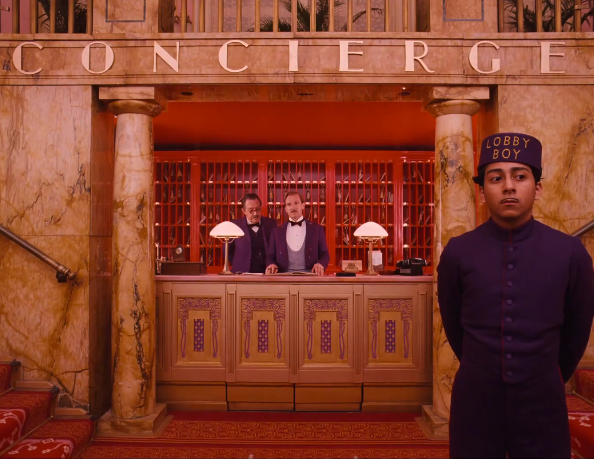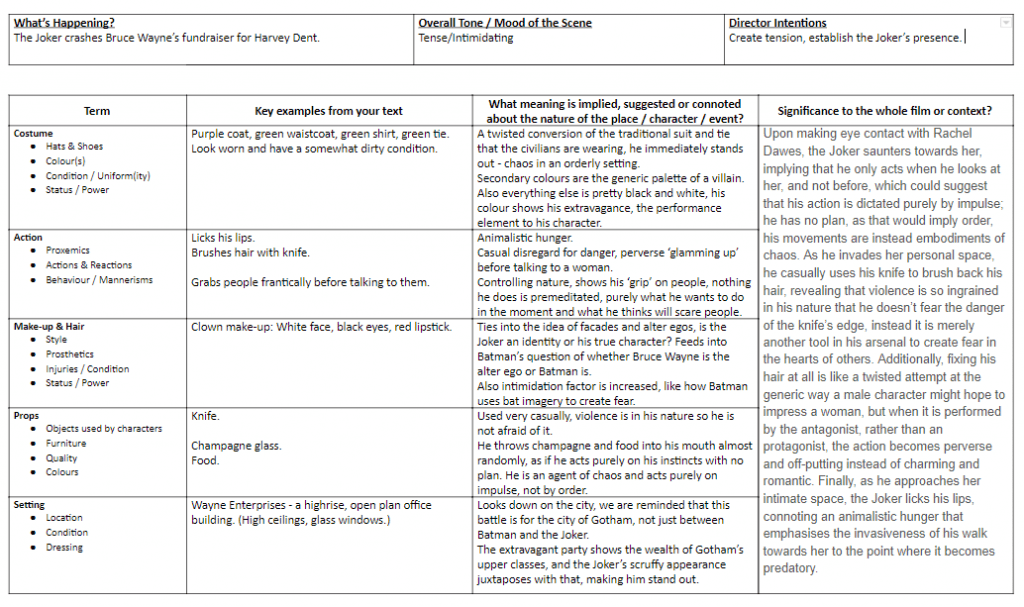A TEXTUAL ANALYSIS OF THE PALE MAN SEQUENCE:
‘How does mise-en-scene in Ophelia’s second task create meaning for the audience and reinforce the themes & messages that Guillermo Del Toro is trying to communicate in Pan’s Labyrinth?’
Pan’s Labyrinth is a subversion of the fantasy genre released in 2006 and directed by Guillermo Del Toro, presenting themes of defiance, disobedience, and innocence. The film is set to the backdrop of fascist Spain, five years after the end of the Spanish Civil War in 1939, and features a dual narrative. It uses this unique narrative structure to explore two worlds: the real world, through the eyes of Mercedes, a member of staff at the military outpost the film revolves around that aids the local Republican rebels; and the fantasy world through Ofelia, the protagonist and step-daughter of the antagonistic Vidal, a captain in General Franco’s Nationalist army, who discovers that she is actually a princess of the underworld and must complete three tasks to return to a life without pain and suffering. The critical reception of the film was overwhelmingly positive, with Kim Newman at Empire describing the film as ‘Dark, twisted and beautiful’, going on to observe that ‘this (film) entwines fairy-tale fantasy with war-movie horror to startling effect’, and after the film’s release, many labelled Del Toro as an auteur. The scene in question follows Ofelia’s attempt to complete her second task, in which she needs to journey into the lair of the treacherous Pale Man in order to retrieve a dagger, using the key she obtained in the first task. The scene features an extravagant banquet and serves as a direct parallel to an earlier scene, The Captain’s Feast. Therefore, an interesting comparison is drawn between Vidal and the Pale Man, further vilifying the Captain and exploring the Pale Man as a representation of fascism.
One factor that could convey this fascist interpretation of the Pale Man to the audience is the setting of the scene: a grand, tiled hall of ornate stone pillars leading to a magnificent dining room topped with a domed ceiling covered in murals. It is well lit, with skylights and fires that bask the room in whites, reds and oranges that create a warm atmosphere. The luxurious lighting and architecture of his lair connotes wealth and power, as well a status high above Ofelia, because her room, in comparison, is dark, cold and scarcely lit, allowing the natural blacks, blues, and browns of the rural night to build a contrasting desolate, depressing atmosphere. This serves as an apt metaphor for the facist system, as it rewards the evil beings willing to be ruthless with this aforementioned wealth and power, while those at the bottom, not willing to fight for status, suffer in poverty. A quote from Del Toro signifies that ‘The Pale Man represents all institutional evil feeding on the helpless. It’s not accidental that he is a) Pale b) a Man.’ His use of prosthetics, make-up, and CGI to portray the Pale Man this way is clearly a criticism of the white men in power during Franco’s regime who were oppressing the innocent population, as well as the glorification of their status.
Additionally, meaning can be drawn from the choice of costume for the sequence. In opposition to the reds and oranges of the room, Ofelia wears a green dress and a green jacket, with brown shoes. Green is the colour of life, connoting purity, harmony and goodness, and contrasts heavily with the negative connotations of the primarily red setting, such as blood, rage, and danger. Therefore, Del Toro could perhaps be highlighting how unnatural the presence of Ofelia, a kind and innocent person, is in a place of such despair and anguish. Furthermore, a key theme of the film is how the real world interacts with the fantasy world, so this sequence could be emphasising that clash through the clash of colours present in the scene.
However, while visually appearing so, Ofelia may not feel so out of place in the Pale Man’s lair, as Del Toro uses action to draw a strong comparison between the monster and her own step-father, Vidal. This connection is implied when Ofelia is trying to escape from the monster through her newly-drawn door in the ceiling, and the Pale Man swings wildly at her legs in an attempt to grab her. This action is drawn out, possibly to heighten the tension of Ofelia’s escape, but it could also suggest that, had the Pale Man taken his time and reached for her leg calmly, he could have easily caught her. But, instead, he flails his arms blindly, as he is a creature motivated only by rage and hunger, with no logic or sense. This is where the comparison is established, as Vidal’s actions and ideals are motivated purely by fury and greed, with a distinct lack of rationality, suggesting that he is a similar kind of monster. The comparison is reinforced through Del Toro’s use of proxemics, as both characters are seated at the head of the table during their respective ‘feast’ scenes, connoting a mutual sense of self-importance, and a subtle lust for power.
Finally, meaning is created due to a combination of action and props in the moment where Ofelia actively defies both the advice of the Faun and the wishes of the fairies when she eats the grapes she has stolen from the Pale Man’s banquet. The two grapes she picks up are large and wet, implying freshness and an abundance of flavour that makes them all the more enticing, and when she eats them she closes her eyes in satisfaction. This deliberate disobedience could portray Ofelia as a naïve child falling victim to temptation like Eve and Persephone before her, but alternatively, she could be seen as a champion of rebellion and an emblem of the Republicans, suggesting that defiance is crucial to surviving in an authoritarian state such as fascist Spain where you’re constantly being fed misinformation and propaganda. Del Toro could be hinting at the idea that disobeying the wishes of those in power and making up your own mind is the most important act of rebellion.
Ultimately, Del Toro uses the mise-en-scene of the scene to emphasise the worst aspects of the film’s antagonist, Vidal, through his similarities to the Pale Man, as well as exploring themes regarding fascism, namely the power imbalance it creates, its ‘hunger to eat innocence’, and the importance of defying it.
Word Count (Excluding Quotes): 1000.
Word Count (Including Quotes): 1040.
Bibliography (Chronological):
Quote 1: https://www.empireonline.com/movies/reviews/pan-labyrinth-review/
Quote 2: https://twitter.com/realgdt/status/827065272028766208?lang=en
Quote 3: https://screenrant.com/pans-labyrinth-movie-pale-man-backstory-symbolism/
TARGETS:
Targets:
T – Include macro terms such as ‘repertoire of elements’, ‘type’, and ‘conventions’.
E – Be more specific in my description of costume. I failed to address, age, purpose, material or decoration.
A – Develop more sophisticated analytical adjectives, for example, Vidal and the Pale Man are both libidinous men when it comes to power.
S – Weave context into all points as I have one paragraph with none and others with lots.

